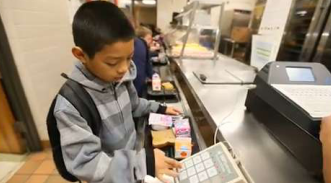Melissa Taboada-Austin American Statesman
(Excerpt) As the number of poor students grows, school districts increasingly have to bear more costs with programs and support services to help them catch up. While additional state and federal funding for low-income students covers some of the cost, district officials say the amounts aren’t enough to keep up with the growing numbers. “A lot of the costs are being pushed down to the local entities to take care of,” said Austin school district Trustee Ann Teich, who lives in the North Central Austin area of the district, where Barrington is located. But others have stepped in to help. Austin Voices for Education and Youth connects families to social services such as low-cost health insurance for children or emergency financial assistance for housing or utility bills. Those family resource centers, which the district helps fund, are housed within several schools in North and East Austin. Schools that don’t have a family resource center offer other support. At Barrington, a part-time parent specialist has offered to teach parents basic computer skills, English and cooking. Teich, a retired teacher, said that when the needs of the students aren’t met, it triggers a domino effect of lower academic achievement and assessment scores.
“To not offer wrap-around services means we have kids who will be absent a lot, who may be sick a lot, who may not have the motivation to do well in school,” Teich said. “If you’re hungry and you’re tired or have a situation that is chaotic, it’s very hard to focus and learn. We know their outside surroundings affect their academic performance. Education is a community effort, not just a school effort. If we want to have an educated workforce, then let’s invest in it.


